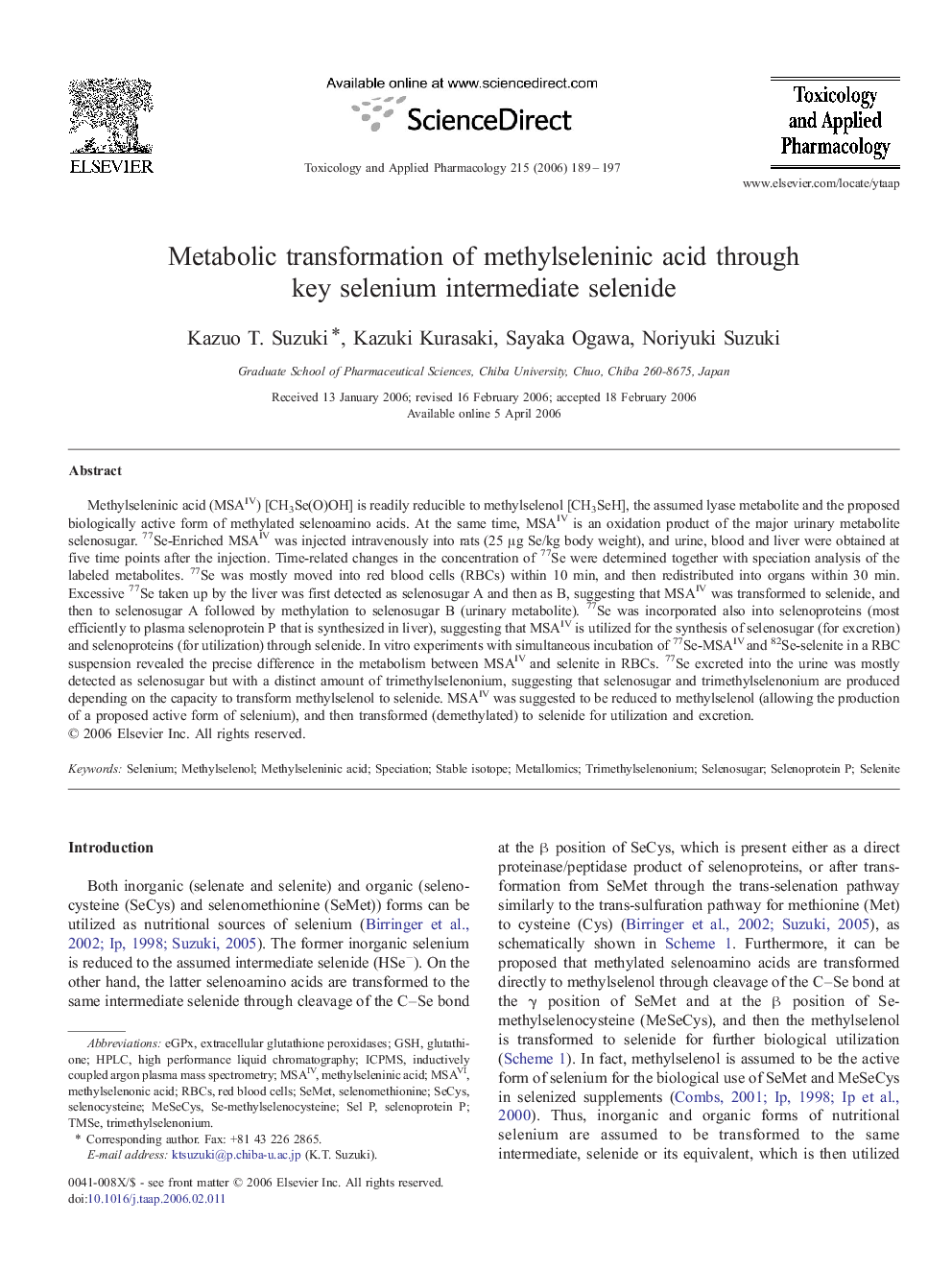| کد مقاله | کد نشریه | سال انتشار | مقاله انگلیسی | نسخه تمام متن |
|---|---|---|---|---|
| 2571729 | 1128648 | 2006 | 9 صفحه PDF | دانلود رایگان |

Methylseleninic acid (MSAIV) [CH3Se(O)OH] is readily reducible to methylselenol [CH3SeH], the assumed lyase metabolite and the proposed biologically active form of methylated selenoamino acids. At the same time, MSAIV is an oxidation product of the major urinary metabolite selenosugar. 77Se-Enriched MSAIV was injected intravenously into rats (25 μg Se/kg body weight), and urine, blood and liver were obtained at five time points after the injection. Time-related changes in the concentration of 77Se were determined together with speciation analysis of the labeled metabolites. 77Se was mostly moved into red blood cells (RBCs) within 10 min, and then redistributed into organs within 30 min. Excessive 77Se taken up by the liver was first detected as selenosugar A and then as B, suggesting that MSAIV was transformed to selenide, and then to selenosugar A followed by methylation to selenosugar B (urinary metabolite). 77Se was incorporated also into selenoproteins (most efficiently to plasma selenoprotein P that is synthesized in liver), suggesting that MSAIV is utilized for the synthesis of selenosugar (for excretion) and selenoproteins (for utilization) through selenide. In vitro experiments with simultaneous incubation of 77Se-MSAIV and 82Se-selenite in a RBC suspension revealed the precise difference in the metabolism between MSAIV and selenite in RBCs. 77Se excreted into the urine was mostly detected as selenosugar but with a distinct amount of trimethylselenonium, suggesting that selenosugar and trimethylselenonium are produced depending on the capacity to transform methylselenol to selenide. MSAIV was suggested to be reduced to methylselenol (allowing the production of a proposed active form of selenium), and then transformed (demethylated) to selenide for utilization and excretion.
Journal: Toxicology and Applied Pharmacology - Volume 215, Issue 2, 1 September 2006, Pages 189–197